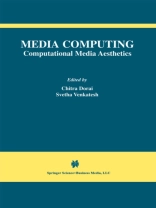Traditionally, scientific fields have defined boundaries, and scientists work on research problems within those boundaries. However, from time to time those boundaries get shifted or blurred to evolve new fields. For instance, the original goal of computer vision was to understand a single image of a scene, by identifying objects, their structure, and spatial arrangements. This has been referred to as image understanding. Recently, computer vision has gradually been making the transition away from understanding single images to analyz- ing image sequences, or video understanding. Video understanding deals with understanding of video sequences, e. g. , recognition of gestures, activities, fa- cial expressions, etc. The main shift in the classic paradigm has been from the recognition of static objects in the scene to motion-based recognition of actions and events. Video understanding has overlapping research problems with other fields, therefore blurring the fixed boundaries. Computer graphics, image processing, and video databases have obvious overlap with computer vision. The main goal of computer graphics is to gener- ate and animate realistic looking images, and videos. Researchers in computer graphics are increasingly employing techniques from computer vision to gen- erate the synthetic imagery. A good example of this is image-based rendering and modeling techniques, in which geometry, appearance, and lighting is de- rived from real images using computer vision techniques. Here the shift is from synthesis to analysis followed by synthesis.
Chitra Dorai & Svetha Venkatesh
Media Computing [PDF ebook]
Computational Media Aesthetics
Media Computing [PDF ebook]
Computational Media Aesthetics
Buy this ebook and get 1 more FREE!
Language English ● Format PDF ● ISBN 9781461511199 ● Editor Chitra Dorai & Svetha Venkatesh ● Publisher Springer US ● Published 2012 ● Downloadable 3 times ● Currency EUR ● ID 4649763 ● Copy protection Adobe DRM
Requires a DRM capable ebook reader












